If Someone You Know Is Going to Do a Mic Drop…
With the mic drop becoming so trendy, it is with some consolation that the majority of these mic drops are with dynamic microphones. Unlike condenser mics, which are much more sensitive and require external phantom power to operate, dynamic mics are rugged and can amplify any incoming audio sounds without the need for phantom power.
In my 40 years of being a musician, I have had the good fortune to spend a considerable amount of time on stage and in the studio with a wide range of different microphones, and luckily have had enough experience with the dynamic mics I’ve reviewed here to provide some insights that I hope will be beneficial to readers.
Dynamic Design
The term “dynamic microphone” comes from their design, the most popular of which is described as a “moving coil” type. The bulk of moving coil type designs produce the ubiquitous cardioid polar pattern, which is named for its heart-shaped pattern of audio response.
In this design, a very thin coiled wire is attached to the mic’s diaphragm and suspended inside a magnetic structure, like a tiny loudspeaker. When sounds vibrate the diaphragm, the coil also moves, creating a current in the magnetic field. This electronic signal is what gets fed into an amplifier to be heard over loudspeakers.
Moving coil dynamic mics have a number of positives: they are relatively simple to mass produce, they are pretty durable, they can tolerate very high sound pressure levels (SPLs), and as mentioned before, do not require phantom power.
On the other hand, the design also is subject to the laws of inertia, and since the diaphragm has to induct the coil to move physically, it makes the reproduction of higher frequencies a greater challenge, which results in a high-frequency roll off starting from approximately 16 kHz.
These characteristics make dynamic mics ideal for live performance and mic drops, where an unusual level of abuse can occur and the dynamic’s lower cost and sturdier construction can withstand conditions that would severely damage more sensitive and costlier mics best suited for the confines of the studio.
My Top Picks
-
 $109.00Check on Amazon Check on Musician's Friend
$109.00Check on Amazon Check on Musician's FriendThere’s a very good reason why the SM 57 and SM 58 are popular cardioid dynamic instrument microphones - they have stood the test of time under innumerable situations and delivered the goods. If I only have 1 mic to use on a budget, I know it will work reliably and will be relatively easy to use in almost any situation. The combination of low price and excellent sound make it a steal.
06/29/2025 01:23 am GMT -
 $86.00Check on Amazon Check on Musician's Friend
$86.00Check on Amazon Check on Musician's FriendThe i5 Dynamic Instrument Microphone competes very favorably with the SM 57 in pretty much every category and application, and since it is the same price, one could do much worse in comparison.
06/29/2025 01:23 am GMT -
 $1,199.00Check on Amazon Check on Musician's Friend
$1,199.00Check on Amazon Check on Musician's FriendA versatile dynamic super-cardioid pattern five-position microphone with the closest to matching the performance of the Neumann U87 condenser mic, which is my personal gold standard. It is the only I think can be used on a grand piano and achieve equivalent results to that of a top-of-the-line condenser mic, although a number of the others can be used with equal or even better results on a host of other instruments.
06/29/2025 02:04 am GMT -

$377.52$349.00Check on Amazon Check on Musician's FriendGiven that the MD421 II Cardioid Dynamic Mic is less than half of the price of the MD441 U and delivers about 85-90% of the same performance, it would be my 2nd choice.
06/29/2025 02:03 am GMT -
 $439.00Check on Amazon Check on Musician's Friend
$439.00Check on Amazon Check on Musician's FriendHaving used both, I would have no qualms using either for lead vocal recordings. I'd also recommend the Sennheiser MD441 U. All three exhibit much of the quality usually found in high end, large diaphragm condenser microphones, although they are all on the large side and only the MD441 U can possibly be handheld.
06/29/2025 04:04 am GMT -
 $449.00Check on Amazon Check on Musician's Friend
$449.00Check on Amazon Check on Musician's FriendHaving used both, I would have no qualms using either for lead vocal recordings. I'd also recommend the Sennheiser MD441 U. All three exhibit much of the quality usually found in high end, large diaphragm condenser microphones, although they are all on the large side and only the MD441 U can possibly be handheld.
06/29/2025 03:07 am GMT -
 Check on Amazon Check on eBay
Check on Amazon Check on eBayFor handheld vocals, the M88 Dynamic Microphone With Hypercardioid Polar Pattern is tough to beat, given its excellent sound in the studio as well as onstage.
I’ll first share my personal preferences by application, then review in more detail microphones from a range of brands and budgets to help you choose the microphone(s) best suited for your particular applications. The best advice that I can give is for you to audition them yourselves or at least use YouTube comparisons to get an idea of the sounds that best fit your needs before making a final decision.
AKG Acoustics
Founded in Vienna, Austria right after World War II in 1947, AKG has built a long reputation for excellent sound equipment with their microphones and headphones, some models of which have become industry standards. Their C12 and C414 microphones have been the choice of many for over a half century, including the BBC and Michael Jackson.
Acquired by Harman in 1990s (along with JBL, Digitech, and other musical and audio brands), AKG wireless mics became live staples on the tours of such diverse artists as Peter Gabriel, Eric Clapton, Aerosmith, Kanye West, The Rolling Stones, Rod Stewart, Stevie Wonder, and Simply Red, among others.
AKG D5 Professional Handheld
Vocal dynamic microphone with studio-quality sound for voice reproduction.
AKG’s most popular dynamic vocal mic is the D5. It has a super-cardioid polar pattern for maximum noise and feedback rejection. The D5 also incorporates AKG’s patented laminated Varimotion diaphragm, which delivers extended high-frequency articulation, and a Neodymium iron boron magnet capsule for improved transient response and greater output level.

Credit: AKG
There is a dual shock mount, integrated pop filter, extra-tough steel mesh grille, gold XLR connector pins and a heavy 1.45 lb chassis for enhanced durability against heavy use and abuse on the road. Audio frequency range is 70 Hz to 20 kHz and it carries a 2 Year manufacturer’s warranty.
Audix Microphones
For the past 33 years, Wilsonville, OR-based Audix has been making professional microphones for voice and musical instrument sound reinforcement and recording, turning many noted artists, producers, and engineers into converts.
The Audix artist roster currently includes, The Red Hot Chili Peppers, Crosby, Stills, and Nash, Willie Nelson, Bonnie Raitt, Pearl Jam, Of Monsters and Men, Ani DiFranco, Alanis Morissette, Jimmy Eat World, The Doobie Brothers, and others.
Audix OM7 Hypercardioid
Handheld Hypercardioid Dynamic Microphone + On Stage ASWS58B Foam Windscreen for Handheld Microphones + XLR Mic Cable XLR-M to XLR-F
Touted in the music industry as the “ultimate gain before feedback” live microphone, the OM7 was designed in the 1990s specifically for touring bands who played at huge arenas and stadiums at loud volume levels, where feedback can be a major obstacle. It is extremely feedback resistant and designed to resist feedback especially for performers who like to cup both their hands around the microphone when singing.

Credit: Audix
Designed to handle SPL of over 140 dB without distortion, the OM7 delivers studio-quality sound reproduction for voice, but can also be used for guitar speaker cabinets, saxophone, flute, brass horn instruments, drums and percussion, and even acoustic guitar and dobro both in the studio as well as onstage.
The output level is about 8 to 10 dB lower than its competitors’, which is a natural pad and aids in the OM7’s feedback rejection properties. It has a frequency range of 48 Hz to 19 kHz and weighs 10.8 oz.
Audix i5
The i5 Dynamic Instrument Microphone competes very favorably with the SM 57 in pretty much every category and application, and since it is the same price, one could do much worse in comparison.
There are certain microphones that have become heralded in the industry as utilitarian workhorse mics that can be used on most any sound source (see below). While most modern microphones have a primary design application, there are a few models that attempt to compete in the Swiss Army Knife arena, and the ruggedly built Audix i5 is one one of the few successfully doing so.

Credit: Audix
It has become an alternate “go to” mic for snare drum and toms, guitar cabinets, acoustic instruments, horns, and electric guitar and bass speaker cabinets. Although promoted as an instrument microphone, it is also excellent for vocals and speech, and even has a profile reminiscent of its primary competitor in the field.
With a > 140 dB SPL handling capability and a 50 Hz – 16 kHz frequency range, the i5 is worth a consideration at a Street price of $99.00.
Beyerdynamic
Since 1924 Germany’s Beyerdynamic has been designing and manufacturing high-end microphones and headphones for professional recording, broadcast and stage performance. Beyerdynamic mics have become fixtures in many studios and mic lockers of producers and engineers around the world, but predominantly in Europe.
Tony Visconti often used a Beyerdynamic M160 ribbon mic for David Bowie in order to add depth and reduce sibilance in the late artist’s classic vocals on such hits as. “Heroes” and “Young Americans”. Eddie Kramer used Beyerdynamic mics on every Hendrix record he worked on.
Andy Johns used Beyerdynamic mics to capture John Bonham’s signature drum sound on such famous Led Zeppelin tracks as “When the Levee Breaks”. David Gilmour of Pink Floyd, Phil Collins and John Mayer are also noted Beyerdynamic mic users.
Beyerdynamic M88 TG
For handheld vocals, the M88 Dynamic Microphone With Hypercardioid Polar Pattern is tough to beat, given its excellent sound in the studio as well as onstage.
The legendary signature sound of Beyerdynamic mics has a fast transient response and a rich low end depth, which is especially preferred by many vocalists concerned about their voices sounding too thin or wanting an intimate warmth to their voices, such as in jazz or ballad singing.

Credit: beyerdynamic Inc. USA
The flat-topped Beyerdynamic M88 has been a favorite of many artists and engineers since the 1960s. It is known for its integrated humbucking coil and low mass diaphragm element, which not only has made it a superb vocal microphone but a flexible option for use with kick drums, bass amps, brass and percussion instruments.
A very close friend of mine who is an internationally acclaimed opera baritone keeps a Beyerdynamic M88 as his personal “go to” mic. It has a hard-to-match frequency range of 30 Hz to 20 kHz and a hyper-cardioid polar pattern.
Electro-Voice
Unsurprisingly, the top names in microphones dating back to early and mid 20th Century are often Austrian or German. Neumannn, Telefunken, AKG and others were pioneers in audio engineering and technology, and scientists working for AEG and BASF prior to World War II are largely responsible for the development of magnetic tape for audio recording, which created the subsequent recording industry to follow.
However, the US was not without its own pioneering technology companies in the audio field. Formed in Indiana during the Great Depression, Electro-Voice got its start building a P.A. for Notre Dame’s Knute Rockne and soon went into the microphone business, designing noise cancelling patents that were used by US and allied forces for military communications during World War II.
After the war, their designs expanded into specialty microphones for recording film sound and music, mixing consoles, broadcast, P.A., and other pro and consumer level audio equipment. EV pioneered the use of neodymium magnets for microphones in the 1980s.
The EV artist roster has a long and impressive pedigree. Current endorsees include: Al Green, Steve Vai, Pete Anderson, Megadeth, GWAR, Joe Bonamassa, Bootsy Collins, Snoop Dogg, Dick Dale, Yngwie Malmsteen, Los Lobos, and many others.
Top Pick: EV RE20
Having used both, I would have no qualms using either for lead vocal recordings. I'd also recommend the Sennheiser MD441 U. All three exhibit much of the quality usually found in high end, large diaphragm condenser microphones, although they are all on the large side and only the MD441 U can possibly be handheld.
A versatile and excellent large-diaphragm dynamic microphone originally designed for broadcast, the RE20 is also very good for vocals, acoustic guitars, and even kick drums. The RE20 is omnipresent on radio programs, such as The Howard Stern Show, but has long been used by singers like Stevie Wonder.

Credit: Electro-Voice
A heavy unit manufactured in a configuration reminiscent of vintage tube mics like the Telefunken U47, the RE20 has a built in windscreen with exceptional sibilance control and reduction of plosives, thanks to the large Acoustalloy diaphragm and low mass humbucking aluminum coil. It also features the EV “Variable-D” circuit, which eliminates the proximity effect (lower mids enhanced the closer the mic is to its sound source).
The RE20 is a dynamic mic that delivers studio-quality performance on par with many top condenser, tube and ribbon mics. In my own applications, I have found it superb for baritone vocal recording and for kick drums in the studio, as well as for other instruments. It has a frequency range of 45 Hz to 18 kHz.
EV ND96 Supercardioid
Dynamic Supercardioid Vocal Microphone 50Hz - 15 kHz and 140 Hz to 15 kHz frequency range when the featured vocal presence switch, cuts lower mids and boosts upper mids.
Utilizing the EV neodymium magnet platform, the ND96 has been EV’s top-rated stage performance dynamic mic for several years. Its super-cardioid polar pattern and ability to take SPL up to 140 dB while suppressing feedback and enjoying the higher output inherent from the neodymium magnet.

Credit: Electro-Voice
The ND96 has a 50Hz – 15 kHz and 140 Hz to 15 kHz frequency range when the featured vocal presence switch, which cuts lower mids and boosts upper mid frequencies, is engaged. The EV96 has an affordable street price.
RODE Microphones
Based in Sydney, Australia, RODE is a spinoff of pro audio proponent Freedman Audio, which was founded by Swedish emigres Henry and Astrid Freedman in the 1960s. RODE was formed in the 1990s as Freedman’s microphone division, with proprietary designs being manufactured in China.
Their RODE NT1 studio mic was enthusiastically welcomed by the burgeoning DIY recording community as one of the first studio-quality large condenser mics to be had on a small budget. RODE Microphone users include: Queens of the Stone Age, Amy Winehouse, Duff McKagan (Guns n’ Roses), Eagles of Death Metal, The Hives, and Li’l Wayne.
RODE M1
Live Performance Dynamic Cardioid Vocal Microphone ideal for performers who swing, cup, smack, drop, and beat on microphones, whether intentionally or not.
Housed in a can not unlike Australian Foster’s Beer, the RODE M1 is a hefty (about 12 oz.), solidly constructed cardioid mic featuring a neodymium capsule and a lifetime guarantee. One of its most notable features is an integrated shock mounting resulting in extremely low handling noise, making it ideal for performers who swing, cup, smack, drop, and beat on microphones, intentionally or not.

Credit: RØDE Microphones
The RODE M1 has a thick foam windscreen, which does a good job of reducing plosives, and has a reduced proximity effect, which keeps it from sounding too muddy in the lower midrange and, in conjunction with a built-in + 6 dB slight boost at around 7-8 kHz, might help it to cut through a mix.
Although it has a neodymium capsule, the output is somewhat less than comparable mics with neodymium magnets, which might help in preventing overload, but might also require louder sound source input. This might make the M1 a more suitable choice for screamers who tend to overload mics but perhaps not the best option for a whispery chanteuse. Frequency range is 75 Hz – 18 kHz.
Samson Technologies
Originally created to be the in-house brand for OEM musical and pro audio equipment to be sold by musical instrument retail chain Sam Ash Music, Samson Technologies started in 1980 as their wireless microphone systems brand, and has since expanded to include a whole catalog of pro audio and musical instrument electronic gear, including Hartke Bass Amps.
The roster of artists who use Samson equipment has grown exponentially and includes musicians such as Victor Wooten, Jordan Rudess (Dream Theater), Richie Kotzen, Herman Li (Dragonforce), Carmine Appice, Tina Guo, and others.
Samson R31S Dynamic Microphone
Dynamic Vocal Microphone with a hyper cardioid pattern, surprisingly clear for male vocals onstage.
The Samson R31S is a surprisingly solid and serviceable microphone for stage, rehearsal and limited recording use. It is essentially a clone of the uber popular Shure SM 58, with a similar profile and frequency range spec (50 Hz – 15 kHz). There is also an on/off switch.

Credit: Samson Technologies Corp
The R31S has a hyper cardioid pattern and is surprisingly clear for male vocals onstage. It is also adequately durable and is perfectly fine for rehearsals, small gigs where P.A. systems are basic and utilizing limited outboard sound processing, as back up spares to a regular mic line up of SM 58s, and as a grab and go recording mic for a demo vocal or instrumental overdub.
The R31S is an amazing bargain, and also comes in a 3 mic package for that includes a case and cables.
Sennheiser Electronic GmbH
Founded in Germany right after World War II, Sennheiser has been synonymous with high quality sound reproduction. Their microphones and headphones (Sennheiser pioneered the open headphone) are industry standards in recording studios and film and video productions around the globe, and their equipment is also used by Lufthansa Airlines, sports arenas, and many other installations.
Sennheiser mics were showcased by George Harrison and Bob Dylan at The Concert For Bangla Desh and have been the mic of choice for Adele, Donna Summer, Kylie Minogue, Stevie Nicks, Imogen Heap and many others.
Sennheiser MD421 II
Given that the MD421 II Cardioid Dynamic Mic is less than half of the price of the MD441 U and delivers about 85-90% of the same performance, it would be my 2nd choice.
A highly coveted mic for over 35 years, the MD421 was an overwhelming favorite mic of producers and engineers for very high SPL sound sources, such as drums and electric guitar speaker cabinets.
Ads for the MD421 during the 1970s showed its accurate reproduction of gunfire at close range without a hint of overload. It also was Donna Summer’s preferred mic. The MD421 II continues these trademark characteristics with some enhanced features.
There is a 5 position selectable bass rolloff switch extending the MD421 II’s versatility towards a wider range of instrument miking applications. The fast transient handling and 30 Hz – 17 kHz frequency range makes the MD421 II well suited for brass, woodwinds, and strings, with the flexibility to attenuate the mic’s inherently added low end for optimum balance.
Another major improvement is the new microphone adapter, which is sturdier than the old one, which had a plastic slide mount prone to cracking. Street price: $379.95
Sennheiser 441 U Supercardioid
A versatile dynamic super-cardioid pattern five-position microphone with the closest to matching the performance of the Neumann U87 condenser mic, which is my personal gold standard. It is the only I think can be used on a grand piano and achieve equivalent results to that of a top-of-the-line condenser mic, although a number of the others can be used with equal or even better results on a host of other instruments.
While the relatively obscure Sennheiser 441 U mic is seen on few stages with the exception of Stevie Nicks, it is a longtime favorite of many engineers and producers. Its exceptionally accurate and clear sound makes it a dynamic rival to top studio condenser mics such as the Neumann U87.
While it is the most expensive microphone in this overview, it is well worth every penny for recording vocals as well as pretty much any sound source, including grand piano. It boasts a nearly textbook perfect super-cardioid polar pattern and has a five-way high-pass filter that rolls off bass at different frequency ranges, with the most extreme setting at -12 dB an octave below 500 Hz.
There is also a high mid boost switch that delivers a + 5-7 dB boost between 2.2 kHz and 20 kHz. I have personally used it with amazing results for its clear reproduction of deep voices where extreme sound reflection rejection was required beyond the sound dampening of a vocal booth. Street price: $899.95.
Shure
Arguably the most famous and respected name around the world when it comes to microphones, Shure was founded in 1925 by S.N. Shure in Chicago, originally as a radio company. Their business expanded to turntable cartridges, P.A. systems and communications for the military over the next several decades.
Their SM 57 microphone has been used exclusively by every US President since Lyndon Johnson and can be found in over half of all recording studios and performance venues around the world . Given their ubiquity, pretty much who has performed in a club or theater or has recorded with electric guitars and drums has used a Shure microphone.
Their industry innovations include the first Pressure Zone Boundary microphone, the first portable microphone mixer for video production, and the first portable P.A. system.
Top Pick: Shure SM 57
There’s a very good reason why the SM 57 and SM 58 are popular cardioid dynamic instrument microphones - they have stood the test of time under innumerable situations and delivered the goods. If I only have 1 mic to use on a budget, I know it will work reliably and will be relatively easy to use in almost any situation. The combination of low price and excellent sound make it a steal.
The aforementioned industry workhorse jack of all trades dynamic microphone is unquestionably the Shure SM 57. Besides its ubiquity for speech around the planet, it is also a live and studio staple for everything from snare drums, guitar cabinets and vocals, with artists like Bono of U2, Brandon Flowers of The Killers, and Bjork using the SM 57 for their lead vocals on hit records.

Credit: Shure Incorporated
Many modeling electric guitar amps and processors have different cabinet miking algorithms to replicate the sound of the speaker being miked directly at the cone and off center to varying degrees. The bulk of the digital samples used for these programs are derived from recordings utilizing a Shure SM 57.
An overwhelming majority of digital drum samples, especially snare drums used by many producers and engineers, are recorded with a Shure SM 57. With its rugged, dark grey metal housing, pneumatic shock mount system, and excellent clean response, the SM 57 is built like a tank.
It can withstand drummers hitting it with their sticks, mic drops from petulant singers and standup comics, and the onslaught of Marshall stacks cranked to 10. Its 40 Hz – 15 kHz frequency range offers excellent background noise rejection within its cardioid polar pattern. This bit of history and professional sound has an affordable price.
Top Pick: Shure SM 58
This cardioid dynamic vocal microphone is considered the best selling professional microphone in history and has been likely used by more performers than any other microphone to date.
The Shure SM 58 is considered the best selling professional microphone in history and has likely been used by more performers than any other microphone. Possessing what many engineers claim is an identical capsule to that of the SM 57, the addition of the SM 58 ball mesh windscreen has made it a favorite for vocalists around the world.

Credit: Shure Incorporated
The SM 58 was the only microphone used for the historic Woodstock Festival concert, and its versatility is highlighted in how all of the instruments, from Jimi Hendrix’s Marshalls and the vocals of Crosby, Stills, and Nash to the horns and rhythm section of Sly and the Family Stone and the energy of The Who were all captured and recorded for posterity.
Apart from slightly less bass response (the frequency range of the SM 58 is 50 Hz – 15 kHz, due to the windscreen offsetting the proximity effect), it sounds unsurprisingly very close to the SM 57. Street price: $99.00.
Top Pick: Shure SM7B
Having used both, I would have no qualms using either for lead vocal recordings. I'd also recommend the Sennheiser MD441 U. All three exhibit much of the quality usually found in high end, large diaphragm condenser microphones, although they are all on the large side and only the MD441 U can possibly be handheld.
Shure’s entry into the broadcast mic arena was the SM7, a large diaphragm dynamic mic designed with a very flat, smooth response that has bass rolloff and presence boost controls for added versatility.
The SM7 became a “must have” recording studio when Grammy award-winning engineer Bruce Swedien disclosed that the Shure SM7 was used for Michael Jackson’s vocals on the multi-platinum selling “Thriller” record. Sheryl Crow also featured it heavily on her “The Globe Sessions” album, as did The Civil Wars and Sammy Hagar on the Chickenfoot album.

Credit: Shure Incorporated
The SM7B is the current version of the SM7 and features an extra A7WS windscreen, a better electromagnetic shielding for hum rejection, and an improved shock isolation and yoke mounting for easier setup and more stable handling. Having used the SM7B in recording situations, it is an excellent vocal microphone that exhibits a lot of the qualities of a large diaphragm condenser mic.
It can be a bit dark for higher pitched vocals (thus the bass rolloff feature), although it can also be helpful for adding body to a thin vocal, and can also reproduce brass, woodwinds, acoustic guitar, strings, and other instruments with equal aplomb.
As a dynamic mic, the SM7B is a way to bring studio quality to the stage without the damage concerns that a more fragile condenser or ribbon mic would be subjected to in a live performance setting. Keith Urban is an artist that has used the SM7B live in the past, among others. Frequency range: 50 Hz – 20 kHz. Street price: $399.00.
When to Use a Dynamic Microphone
There are four primary areas where dynamic mics are routinely used and excel in performance and reliability:
- Onstage
- In the recording studio
- Radio broadcast
- Video and film (includes Electronic News Gathering – ENG)
While the recording studio’s overwhelming preference is condenser or ribbon microphones, there are still numerous examples where dynamic mics captured the magic of the moment and preserved it for posterity on countless famous recordings.
Dynamic microphones are the overwhelming choice for the majority of live performance situations. Vocalists, lecturers, politicians, stand up comedians, clergymen, and pretty much anyone whose voice needs to be amplified for an audience will usually be using a dynamic microphone, both if it is hard wired as well as in a wireless radio mic configuration.
The ability to plug and play without the need for external power that is mandatory for tube and condenser microphones makes them well suited for performers who often handhold their mics and move across the stage, or in the case of certain performers, such as Roger Daltrey of The Who, for example, whipped around in a frenzy from their cables.
The combination of lower cost, durability, and reliability of dynamic mics, while maintaining optimum sound quality, is an unbeatable one for most engineers.
Wrapping it Up
I hope this gives readers perspective on some of the main choices available in the current market that offer the best utility. Certain outstanding mics were left out of the list because their use and design is for a specific purpose, such as the Audix D6 kick drum mic or the Sennheiser e609, which is a popular choice for guitar cabinets.
There’s a very good reason why the SM 57 and SM 58 are popular cardioid dynamic instrument microphones - they have stood the test of time under innumerable situations and delivered the goods. If I only have 1 mic to use on a budget, I know it will work reliably and will be relatively easy to use in almost any situation. The combination of low price and excellent sound make it a steal.
The i5 Dynamic Instrument Microphone competes very favorably with the SM 57 in pretty much every category and application, and since it is the same price, one could do much worse in comparison.
A versatile dynamic super-cardioid pattern five-position microphone with the closest to matching the performance of the Neumann U87 condenser mic, which is my personal gold standard. It is the only I think can be used on a grand piano and achieve equivalent results to that of a top-of-the-line condenser mic, although a number of the others can be used with equal or even better results on a host of other instruments.
Given that the MD421 II Cardioid Dynamic Mic is less than half of the price of the MD441 U and delivers about 85-90% of the same performance, it would be my 2nd choice.
Having used both, I would have no qualms using either for lead vocal recordings. I'd also recommend the Sennheiser MD441 U. All three exhibit much of the quality usually found in high end, large diaphragm condenser microphones, although they are all on the large side and only the MD441 U can possibly be handheld.
Having used both, I would have no qualms using either for lead vocal recordings. I'd also recommend the Sennheiser MD441 U. All three exhibit much of the quality usually found in high end, large diaphragm condenser microphones, although they are all on the large side and only the MD441 U can possibly be handheld.
For handheld vocals, the M88 Dynamic Microphone With Hypercardioid Polar Pattern is tough to beat, given its excellent sound in the studio as well as onstage.
Vocal dynamic microphone with studio-quality sound for voice reproduction.
Handheld Hypercardioid Dynamic Microphone + On Stage ASWS58B Foam Windscreen for Handheld Microphones + XLR Mic Cable XLR-M to XLR-F
Dynamic Supercardioid Vocal Microphone 50Hz - 15 kHz and 140 Hz to 15 kHz frequency range when the featured vocal presence switch, cuts lower mids and boosts upper mids.
Live Performance Dynamic Cardioid Vocal Microphone ideal for performers who swing, cup, smack, drop, and beat on microphones, whether intentionally or not.
Dynamic Vocal Microphone with a hyper cardioid pattern, surprisingly clear for male vocals onstage.
This cardioid dynamic vocal microphone is considered the best selling professional microphone in history and has been likely used by more performers than any other microphone to date.

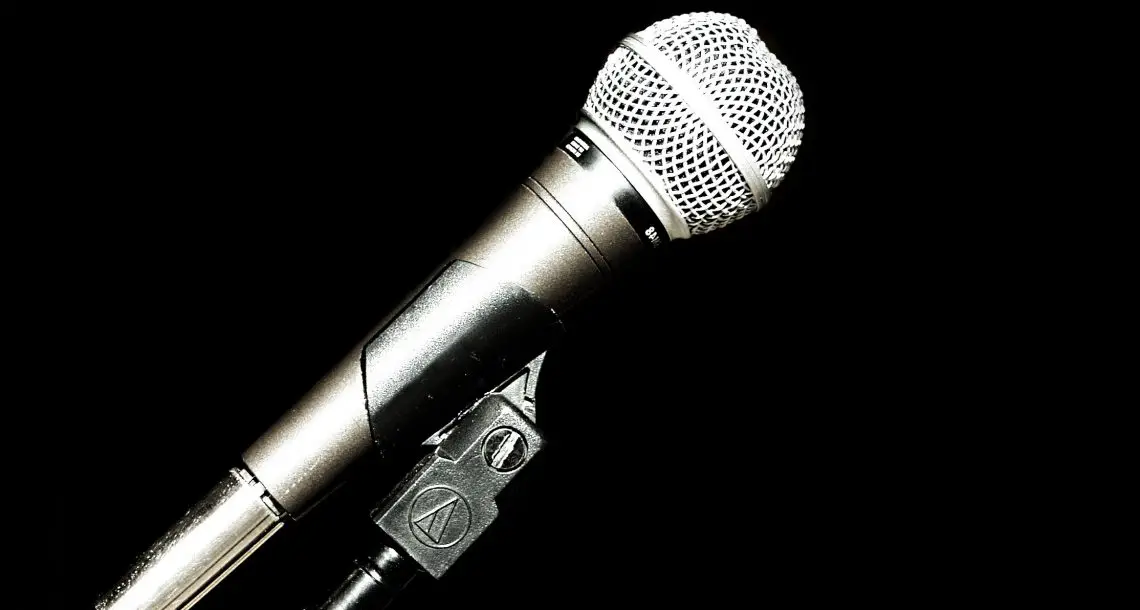









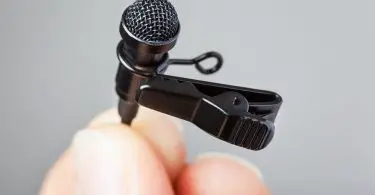
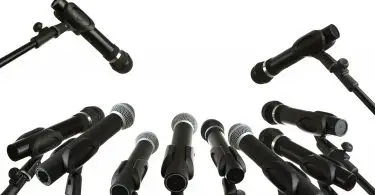
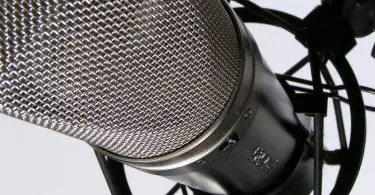
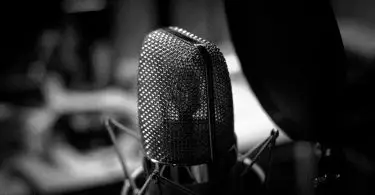
Start the discussion at talk.hearthemusicplay.com